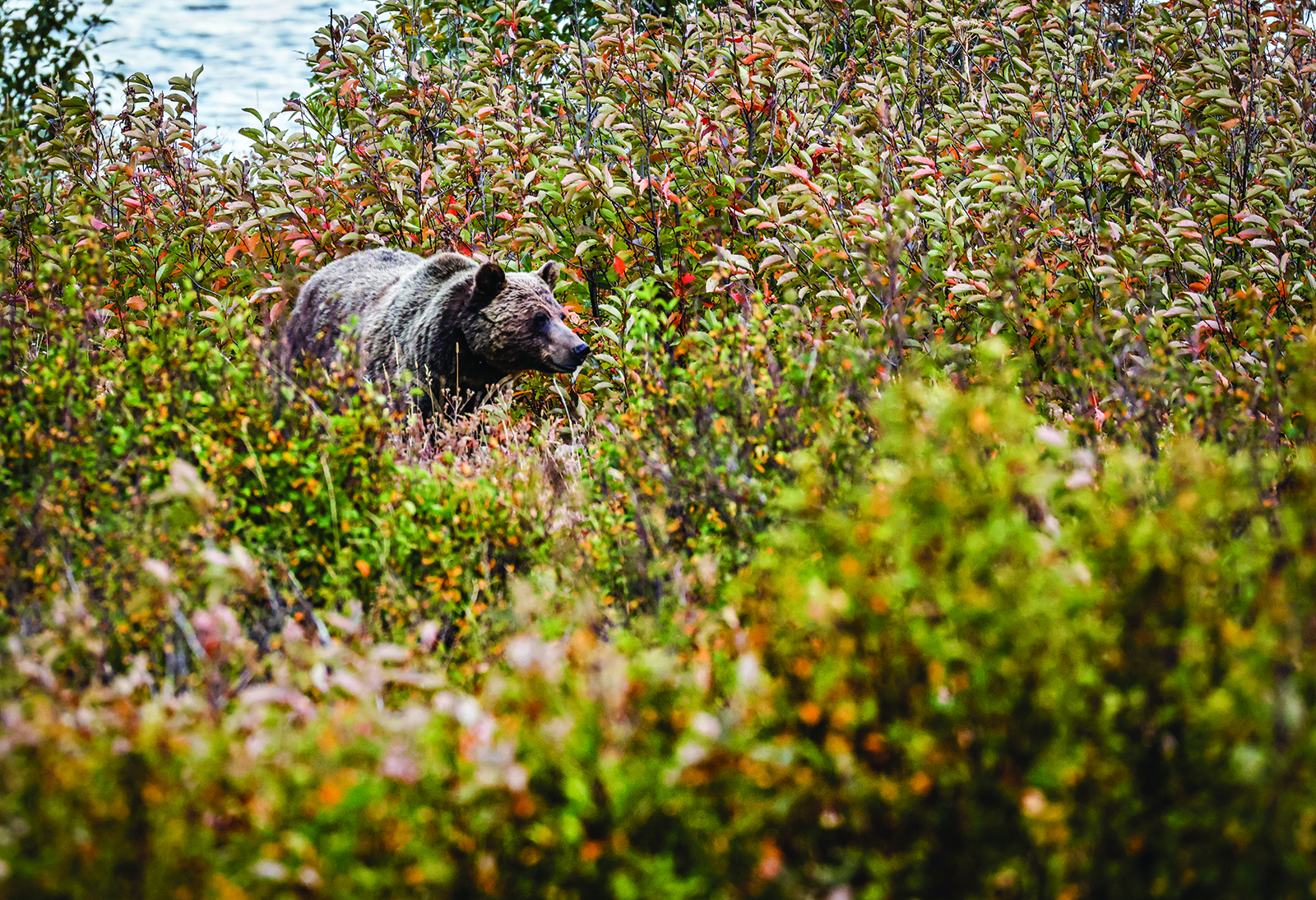A 73-year-old woman is hospitalized with injuries she sustained in an Oct. 1 bear attack on a section of the Flathead National Forest located near the U.S.-Canada border north of Polebridge, according to a Monday afternoon news release from Montana Fish, Wildlife and Parks (FWP).
Wardens and bear specialists are investigating the incident and have deployed game cameras to monitor the site of the attack, which occurred a few miles west of the North Fork Road along the bank of Trail Creek.
The type of bear is not yet confirmed, according to FWP’s Dillon Tabish, but a hair sample was collected from the site for genetic testing.
According to FWP, the victim was on national forestland with her husband and dog when the bear emerged from thick brush and attacked her. The husband deployed bear spray and the bear moved away from the victim. They returned to their vehicle and drove to a location where they could call emergency services.
The A.L.E.R.T. air ambulance transported the victim to Logan Health Medical Center in Kalispell.
Officials did not know whether the couple resides in the North Fork area full time.
FWP learned of the encounter around 3 p.m. The area where the attack occurred is known locally as the “Bubble ups,” where the creek flows underground before rising to the surface. The site is closed while the investigation continues.
The encounter occurred on a swath of public land adjacent to the western edge of Glacier National Park, at a time of year when bears are active for longer periods of the day as they consume more food in preparation for hibernation. The period overlaps with hunting season and other fall recreation activities, prompting bear-human conflicts to occur with greater frequency.
On Sept. 22, wildlife officials captured and euthanized two food-conditioned grizzly bears after a spate of conflicts involving people and private property in the Fortine and North Fork areas.
“Avoiding conflicts with bears is easier than dealing with conflicts,” according to FWP, which encouraged public land users to carry bear spray and be prepared to use it immediately.
Other tips from the wildlife management agency include:
- Make noise to alert bears to your presence and travel in groups.
- Stay away from animal carcasses, which often attract bears.
- Follow food storage orders from the applicable land management agency.
- If you encounter a bear, never approach it. Leave the area when it is safe to do so.
- If you are attacked by a bear and you are without a deterrent or the deterrent hasn’t worked, stay face down on the ground, protecting your face and neck with your arms. Stay still until you’re certain the bear has moved away.
- Keep garbage, bird feeders, pet food and other attractants put away in a secure building. Keep garbage in a secure building until the day it is collected. Certified bear-resistant garbage containers are available in many areas.
- Never feed wildlife. Bears that become food conditioned lose their natural foraging behavior and pose threats to human safety. It is illegal to feed bears in Montana.
People who hunt in places that have or may have grizzly bears — which includes northwest Montana — should take special precautions, according to FWP, including:
- Look for bear sign and be cautious around creeks and areas with limited visibility.
- Hunt with a group of people. Making localized noise can alert bears to your presence.
- Be aware that elk calls and cover scents can attract bears.
- Bring the equipment and people needed to help field dress game and remove the meat from the kill site as soon as possible.
- If you need to leave part of the meat in the field during processing, hang it at least 10 feet off the ground and at least 150 yards from the gut pile. Leave it where it can be observed from a distance of at least 200 yards.
- Upon your return, observe the meat with binoculars. If it has been disturbed or if a bear is in the area, leave and call FWP.
Grizzly bears in the lower 48 states are listed as threatened under the Endangered Species Act. Management authority for grizzlies rests with the U.S. Fish and Wildlife Service, working closely in Montana with FWP, the Forest Service, the National Park Service, the Bureau of Land Management, the U.S. Geological Survey, Wildlife Services, and Native American tribes.
For more information and resources on bear safety, visit fwp.mt.gov/bear-aware.
